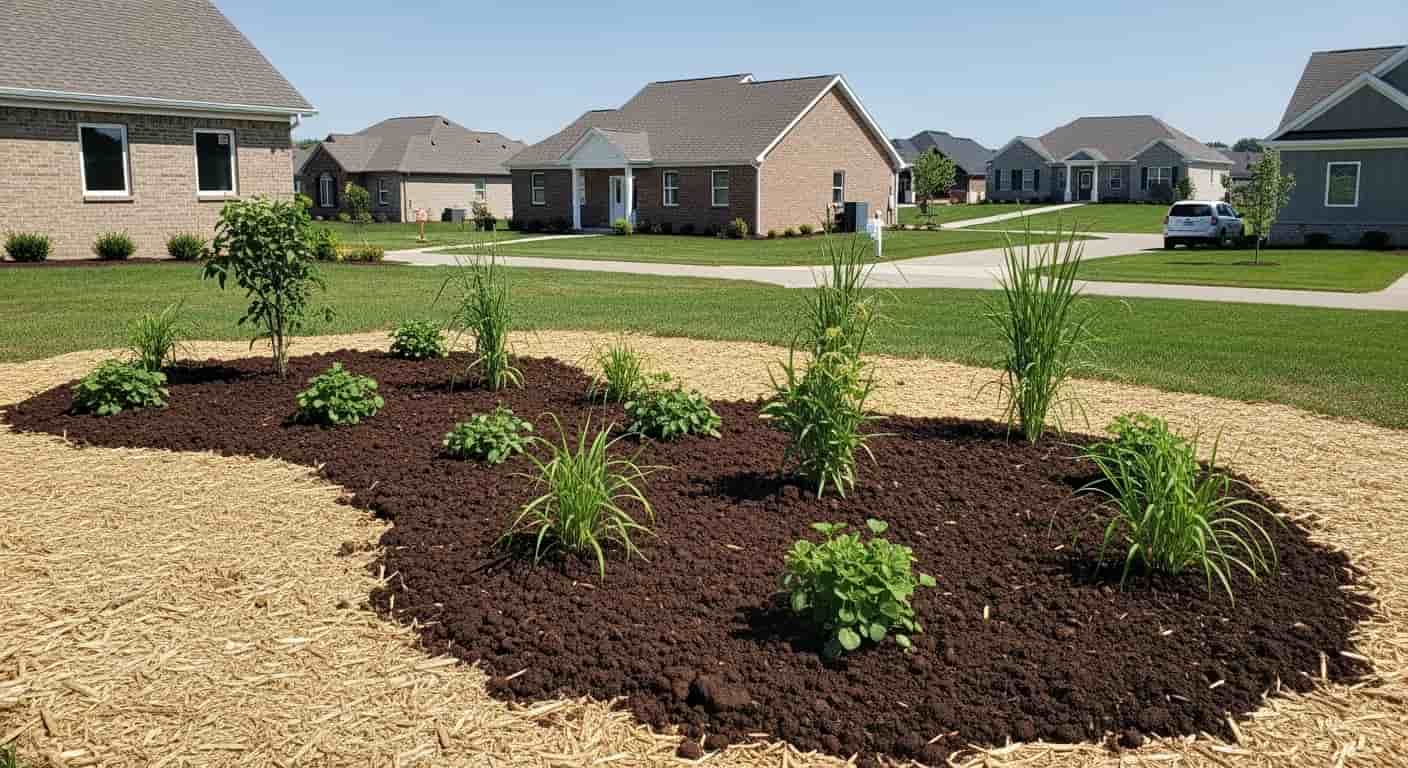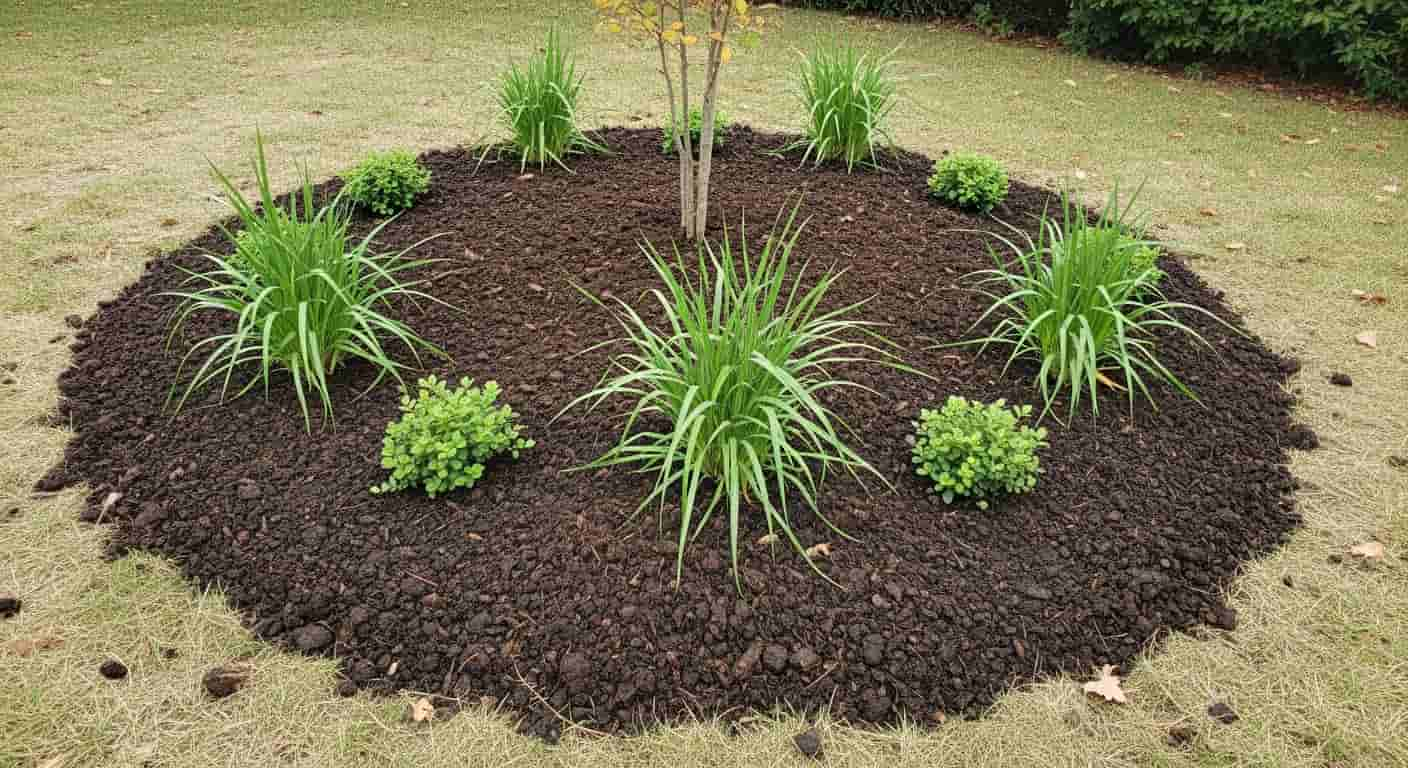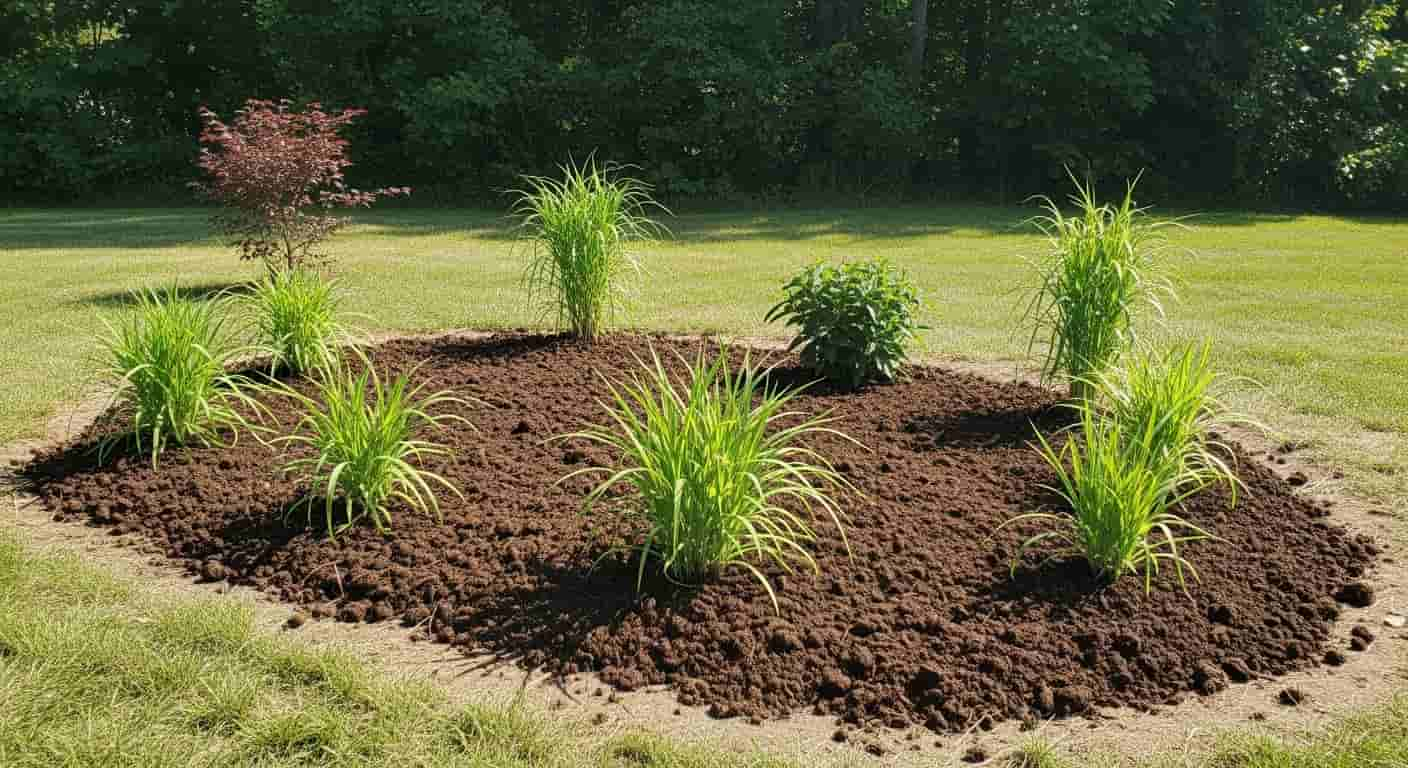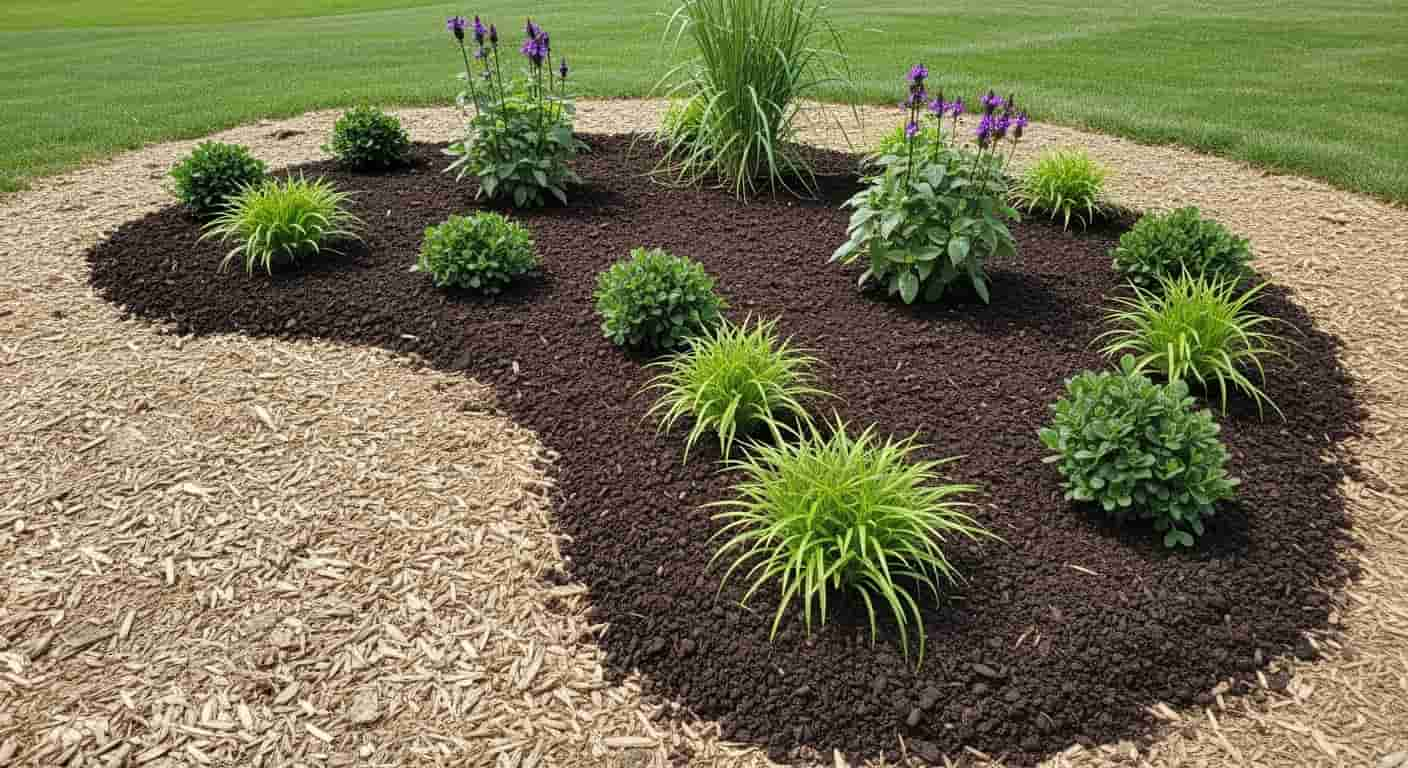Introduction
Rain gardens are a beautiful and eco-friendly way to manage stormwater while enhancing your landscape. At the heart of every successful rain garden lies the right soil, and PADOT 4802-0001 rain garden topsoil is a top choice for homeowners, landscapers, and urban planners.
This specially formulated topsoil meets the strict standards of the Pennsylvania Department of Transportation (PADOT) and is designed to support healthy plant growth, improve water infiltration, and promote environmental sustainability.
In this article, we’ll dive into everything you need to know about PADOT 4802-0001 rain garden topsoil, from its composition and benefits to installation tips and maintenance advice. Let’s explore why this topsoil is a game-changer for creating thriving rain gardens!
What Is PADOT 4802-0001 Rain Garden Topsoil?

PADOT 4802-0001 rain garden topsoil is a high-quality soil blend crafted specifically for rain gardens. Rain gardens are shallow, planted depressions designed to capture and filter stormwater runoff from roofs, driveways, or other impermeable surfaces.
Unlike regular topsoil, this blend is engineered to balance water absorption, drainage, and nutrient retention, making it ideal for rain gardens that need to handle heavy rainfall while supporting native plants.
This topsoil meets PADOT’s rigorous standards, ensuring it’s safe, effective, and environmentally compliant. It’s a mix of organic matter, sand, silt, and clay, carefully proportioned to promote healthy ecosystems and reduce water pollution. Whether you’re building a rain garden in your backyard or working on a large-scale urban project, PADOT 4802-0001 rain garden topsoil provides the foundation for success.
Why Choose PADOT 4802-0001 Rain Garden Topsoil?

Not all soils are created equal, and PADOT 4802-0001 rain garden topsoil stands out for several reasons. Here’s why it’s the go-to choice for sustainable landscaping:
- Optimized for Water Infiltration: The soil’s loamy sand structure allows it to absorb water quickly, reducing runoff and preventing flooding. Studies show that well-designed rain gardens can reduce stormwater runoff by up to 90%.
- Nutrient-Rich for Plants: Packed with organic matter, this topsoil supports native plants that thrive in wet conditions, fostering biodiversity and creating vibrant landscapes.
- Pollution Control: The soil filters pollutants like nitrogen, phosphorus, and heavy metals from stormwater, protecting local waterways. Rain gardens can remove up to 80% of pollutants from runoff, according to the Environmental Protection Agency (EPA).
- Resistant to Compaction: Unlike regular topsoil, PADOT 4802-0001 resists compaction, ensuring consistent water flow even during heavy rains.
- Versatile Applications: While designed for rain gardens, it’s also suitable for bioswales, flower beds, and other landscaping projects that prioritize drainage and fertility.
By choosing PADOT 4802-0001 rain garden topsoil, you’re investing in a product that delivers both environmental and aesthetic benefits.
The Composition of PADOT 4802-0001 Rain Garden Topsoil

Understanding what goes into PADOT 4802-0001 rain garden topsoil helps explain its effectiveness. This topsoil is a carefully balanced blend of:
- Organic Matter: Decayed plant material enriches the soil, improving moisture retention and providing nutrients for plants.
- Sand: Coarse sand enhances drainage, allowing water to infiltrate quickly and preventing pooling.
- Silt and Clay: These finer particles help retain nutrients and moisture, ensuring plants have what they need to thrive.
- Minerals: A mix of essential minerals supports long-term soil health and plant growth.
This combination creates a soil that’s light yet nutrient-dense, with a texture that promotes both drainage and retention. The result is a topsoil that can handle the unique demands of a rain garden while supporting a diverse range of plants.
Benefits of Using PADOT 4802-0001 Rain Garden Topsoil
Using PADOT 4802-0001 rain garden topsoil offers a wide range of benefits for your landscape and the environment. Here are some key advantages:
Environmental Benefits
- Reduces Stormwater Runoff: By absorbing rainwater, rain gardens with this topsoil prevent flooding and reduce strain on municipal drainage systems.
- Improves Water Quality: The soil filters out pollutants, keeping harmful chemicals out of rivers, lakes, and groundwater.
- Supports Biodiversity: Native plants grown in this topsoil attract pollinators like bees and butterflies, boosting local ecosystems.
- Recharges Groundwater: By allowing water to infiltrate slowly, rain gardens help replenish underground water reserves.
Economic Benefits
- Lowers Water Bills: Rain gardens require less irrigation, saving you money on water costs.
- Reduces Infrastructure Costs: Effective stormwater management can minimize the need for expensive drainage systems.
- Increases Property Value: A well-maintained rain garden enhances curb appeal and demonstrates sustainable practices, making your property more attractive to buyers.
Aesthetic Benefits
- Creates Beautiful Landscapes: Native plants in rain gardens add color and texture to your yard.
- Low Maintenance: Once established, rain gardens with PADOT 4802-0001 topsoil require minimal upkeep, saving you time and effort.
These benefits make PADOT 4802-0001 rain garden topsoil a smart choice for anyone looking to create a sustainable and visually appealing landscape.
How to Install PADOT 4802-0001 Rain Garden Topsoil
Creating a rain garden with PADOT 4802-0001 rain garden topsoil is a straightforward process, but proper installation is key to its success. Follow these steps to get started:
Step 1: Choose the Right Location
Select a spot that receives runoff from impervious surfaces like roofs or driveways. The area should be at least 10 feet from your home’s foundation to prevent water damage. Ensure the site gets partial to full sunlight, as most native plants thrive in these conditions.
Step 2: Test Your Soil
Before adding PADOT 4802-0001 rain garden topsoil, test your existing soil to assess its drainage and nutrient levels. If the soil is heavily compacted or clay-rich, you may need to amend it with sand or organic matter before adding the topsoil.
Step 3: Excavate the Area
Dig a shallow depression 18–24 inches deep, depending on the size of your rain garden and the amount of runoff it needs to handle. Create a slight slope to guide water into the center of the garden.
Step 4: Add a Base Layer
Spread a 4–6-inch layer of gravel or coarse sand at the bottom of the excavated area. This base layer improves drainage and extends the lifespan of the topsoil.
Step 5: Apply PADOT 4802-0001 Topsoil
Spread 8–12 inches of PADOT 4802-0001 rain garden topsoil evenly over the base layer. Smooth the surface with a rake, ensuring a gentle slope to direct water flow.
Step 6: Plant Native Species
Choose water-tolerant native plants like switchgrass, purple coneflower, or swamp milkweed. Space plants according to their mature size to avoid overcrowding. Native plants are well-suited to PADOT 4802-0001 topsoil and require less maintenance than non-native species.
Step 7: Mulch and Water
Add a 2–3-inch layer of organic mulch, such as shredded bark, to retain moisture and suppress weeds. Water the plants thoroughly after planting to help them establish roots.
Step 8: Maintain Your Rain Garden
Check for erosion or sediment buildup regularly. Water plants during dry spells until they’re established, and replace any plants that don’t survive. Add compost every few years to keep the soil nutrient-rich.
By following these steps, you’ll create a rain garden that thrives with PADOT 4802-0001 rain garden topsoil as its foundation.
How Much PADOT 4802-0001 Topsoil Do You Need?
The amount of PADOT 4802-0001 rain garden topsoil you need depends on the size of your rain garden and the depth of the soil layer. As a general rule, aim for a topsoil depth of 6–12 inches. Here’s how to calculate your needs:
- Measure the Area: Determine the length and width of your rain garden in feet. Multiply these numbers to get the square footage (e.g., 10 ft x 15 ft = 150 sq ft).
- Choose the Depth: Decide on a topsoil depth (e.g., 12 inches = 1 foot).
- Calculate Volume: Multiply the square footage by the depth in feet to get cubic feet (e.g., 150 sq ft x 1 ft = 150 cu ft). Divide by 27 to convert to cubic yards (150 ÷ 27 = 5.56 cu yd).
- Order Slightly More: Add 10–15% to account for settling and uneven surfaces (e.g., 5.56 cu yd x 1.15 = 6.4 cu yd).
For an average-sized rain garden (100–300 sq ft), you’ll typically need 3–10 cubic yards of PADOT 4802-0001 rain garden topsoil. Check with your supplier for precise measurements and delivery options.
Cost of PADOT 4802-0001 Rain Garden Topsoil
The cost of PADOT 4802-0001 rain garden topsoil varies by supplier, location, and order size. On average, expect to pay $30–$50 per cubic yard. For a 150-square-foot rain garden with a 12-inch topsoil layer, the cost would be approximately:
- Volume: 5.56 cubic yards
- Cost: 5.56 x $40 (average price) = $222.40
Bulk orders may qualify for discounts, and delivery fees depend on your distance from the supplier. While the upfront cost may seem significant, the long-term savings on water bills, maintenance, and infrastructure make PADOT 4802-0001 rain garden topsoil a cost-effective choice.
Maintenance Tips for Rain Gardens with PADOT 4802-0001 Topsoil
Once your rain garden is established, it requires minimal maintenance, thanks to the durable properties of PADOT 4802-0001 rain garden topsoil. Here are some tips to keep it thriving:
- Weed Regularly: Pull weeds early to prevent them from competing with your plants.
- Monitor Erosion: Check for signs of soil erosion after heavy rains and add mulch or plants as needed.
- Replenish Nutrients: Add a thin layer of compost every 2–3 years to maintain soil fertility.
- Prune Plants: Trim dead or overgrown plants to keep the garden tidy and promote healthy growth.
- Inspect Drainage: Ensure water is infiltrating properly. If pooling occurs, aerate the soil or add more topsoil.
With proper care, your rain garden will remain functional and beautiful for years, all while benefiting from the superior qualities of PADOT 4802-0001 rain garden topsoil.
Common Questions About PADOT 4802-0001 Rain Garden Topsoil
Here are answers to some frequently asked questions about PADOT 4802-0001 rain garden topsoil:
Can I Use It for Other Landscaping Projects?
Yes! While designed for rain gardens, its excellent drainage and nutrient content make it suitable for flower beds, vegetable gardens, bioswales, or areas prone to heavy rainfall.
How Long Does the Topsoil Last?
With proper maintenance, PADOT 4802-0001 rain garden topsoil can last for years. Topping up with compost periodically keeps it nutrient-rich and effective.
Where Can I Buy It?
Look for certified suppliers who offer PADOT-compliant topsoil. Check local landscaping companies, garden centers, or online directories for reputable vendors.
Is It Safe for the Environment?
Absolutely. The topsoil is made from organic and natural materials, making it safe for plants, animals, and local ecosystems.
These answers highlight the versatility and reliability of PADOT 4802-0001 rain garden topsoil for a range of applications.
Why PADOT 4802-0001 Rain Garden Topsoil Is a Smart Investment
Investing in PADOT 4802-0001 rain garden topsoil is more than just a landscaping decision—it’s a commitment to sustainability and environmental stewardship. By choosing this topsoil, you’re:
- Reducing your environmental footprint through effective stormwater management.
- Supporting local ecosystems with native plants and pollinators.
- Saving money on water and maintenance costs.
- Enhancing your property’s value and curb appeal.
Whether you’re a homeowner creating a small backyard rain garden or a professional tackling a large urban project, PADOT 4802-0001 rain garden topsoil delivers the performance and reliability you need.
Conclusion
PADOT 4802-0001 rain garden topsoil is the cornerstone of any successful rain garden, offering a perfect blend of drainage, nutrient retention, and environmental benefits.
Its unique composition supports native plants, filters pollutants, and reduces stormwater runoff, making it an essential tool for sustainable landscaping.
By following the installation and maintenance tips outlined in this article, you can create a thriving rain garden that enhances your property and contributes to a healthier planet.
Whether you’re a novice gardener or an experienced landscaper, PADOT 4802-0001 rain garden topsoil is a reliable and versatile choice that delivers lasting results. Start your rain garden journey today and see the difference this topsoil can make!



